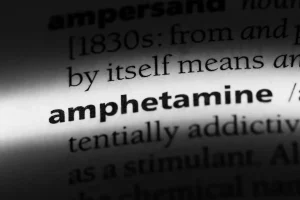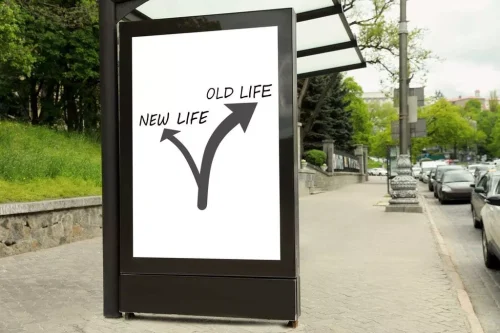
As a sociologist, I came to this area of research in my own quest for meaning, as each year brought more funerals of former classmates and friends. What I found was an increasingly dangerous drug environment for people who use drugs, often exacerbated by policies not founded in research and by attitudes that harm those affected. People who are suffering from an oxycodone use disorder usually require a medically managed detox and a good treatment program to prevent relapse. Oxycodone, a potent painkiller, comes in many forms and is among the most addictive drugs available by prescription.

Top doctors in ,
- Opioids are highly addictive, largely because they trigger powerful reward centers in your brain.
- Macy said people addicted to opiates — some resulting from overprescription by doctors for legitimate injuries and pain — deserve sympathy and help.
- It’s also important to talk with your prescribing doctor if you have a personal or family history of substance use disorder.
- Naltrexone is used to help patients avoid relapse after they have been detoxified from opioid dependence.
- Not only has she stopped picking her skin; she’s also stopped biting her nails.
A. Normally, natural https://ecosoberhouse.com/ opiatelike chemicals produced by the body link to mu opioid receptors on the surface of neurons. This linkage activates an enzyme that converts a chemical called adenosine triphosphate (ATP) into another chemical, called cyclic adenosine monophosphate (cAMP), which in turn triggers the release of NA. Prior to initiation of opioid drug abuse, the neuron produces enough NA to maintain normal levels of alertness, muscle tone, respiration, etc. OxyContin contains between 10 and 80 milligrams of oxycodone in a timed-release formula that allows up to 12 hours of relief from chronic pain. What distinguished OxyContin from other analgesics was its long-acting formula, a blessing for patients who typically need round-the-clock relief.
Why Are Opioids Addictive?
If you’re living with lifelong pain, opioids aren’t likely to be a safe and effective long-term treatment option. Many other treatments are available, including less addictive pain medicines and therapies that don’t involve medicines. If possible, aim for a treatment plan that allows you to enjoy your life without opioids. All her life, Victoria Rutledge thought of herself as someone with an addictive personality.
Risk Factors for Oxycodone Overdose

In these legal battles, the company successfully petitioned courts to have evidence sealed, citing the need to protect trade secrets. The sealed materials included internal memos to members of the Sackler family and others, FDA correspondence, testimony from executives and sales reps’ reports. Bodie’s lawsuit and hundreds of others filed by OxyContin users and their families never got before a jury. Purdue got suits dismissed by asserting, among other defenses, a legal doctrine which shields drug companies from liability when their products are prescribed by trained physicians. That changed in 1999 when he had knee surgery and his doctor put him on OxyContin. MacNamara, then a 27-year-old gym teacher at an elementary school near Orlando, was familiar with painkillers.
In 1996 Purdue Pharma introduced a new drug – a time-released formulation of oxycodone, an opioid painkiller. OyxContin, as the drug was called, was touted as having a low risk of addiction. Unless that person is getting that drug to increase that dopamine, the brain’s not going to be satisfied.
Operating at normal efficiency but with enhanced supplies of converting enzyme and ATP, the neuron produces abnormally high levels of cAMP, leading to excessive release of NA. The patient experiences the clinical symptoms of withdrawal—jitters, anxiety, muscle cramps, etc. If no further drugs are taken, the neuron will largely revert to its predrug condition (panel A) within days or weeks.
Unfortunately, medication compliance is a critical problem with naltrexone, because unlike methadone or LAAM, naltrexone does not itself produce pleasurable feelings. Poor compliance limits naltrexone’s utility to only about 15 percent of heroin addicts (Kosten and Kleber, 1984). « OxyContin was the first prescription medication listed as a drug of concern by the federal Drug Enforcement Agency, which made it a target, » says Ronald T. Libby, PhD. On the eve of trial, Purdue agreed to settle the case by paying the state $10 million for programs to discourage drug abuse.
Definitions of Key Terms.
Methadone has been used as a treatment for opioid use disorder since the 1950s, yet it is persistently hard to access long term. Researchers point to the ongoing role of stigma in the underuse of both of these medications. Yet research shows that addiction is a recurring brain disease, and relapse is highly likely.
- At a 1995 meeting, Purdue executives described how OxyContin could « cure » the « vulnerability » of generic competition and laid out how they planned to market the drug.
- « I say it will be the worst pain of your entire life for two weeks, but that will be the end of it. Meanwhile, we do 12-step and group therapy programs with them and intensive treatment of their withdrawal. »
- He’d been given Percocet and Vicodin for sports injuries, but he said OxyContin was unlike anything he’d ever experienced.
- “I don’t expect this to work for everybody,” says Anders Fink-Jensen, a psychiatrist at the University of Copenhagen who conducted the alcohol study.
- A person caring for you should give naloxone and/or seek emergency medical attention if you have slow breathing with long pauses, blue-colored lips, or if you are hard to wake up.
- Note that this list is not all-inclusive and includes only common medications that may interact with OxyContin.

Several class-action suits how addictive is oxycontin across Canada have been launched against the Purdue group of companies and affiliates. Claimants argue the pharmaceutical manufacturers did not meet a standard of care and were negligent in doing so. These lawsuits reference earlier judgments in the United States, which held that Purdue was liable for wrongful marketing practices and misbranding.
